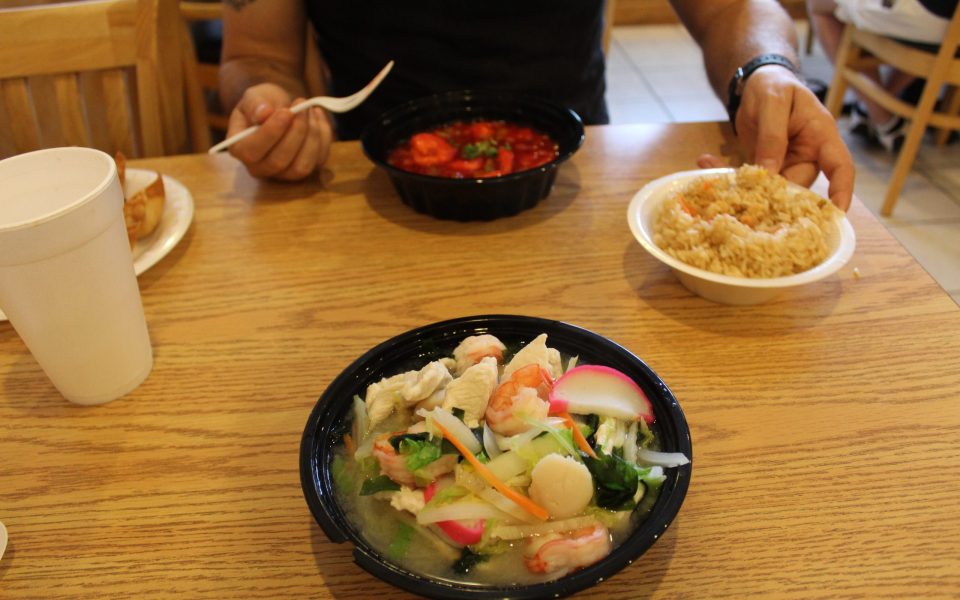 Here’s the short version: It was kind of by accident.
Here’s the short version: It was kind of by accident.
The longer version starts in back in 1994, when I was still tending bar full-time in New Orleans and trying to jump-start my writing career. An old professor had gotten me some face time with Rich Collins, who was the editor of the venerated altweekly the Gambit, and I figured I had the opportunity to make one solid pitch.
At the time, the New Orleans gentlemen’s clubs had been experimenting with actual cuisine, hiring chefs to create menus that rivaled those in the French Quarter’s finest old dining establishments — or, at least, they tried to. I knew this because one of those young, up-and-coming chefs was a regular bar customer of mine, trained under Wolfgang Puck and putting out badass seven-course meals at Rick’s Cabaret, on the smelliest part of Bourbon Street.
Collins took the pitch and I had my first clip. A couple months later, Jamie Bernstein, my editor at another paper, the monthly Where Y’at?, mentioned he was looking for someone to write about the city’s greatest restaurants for the paper. I immediately stepped forward.
I had no special training or knowledge, other than active residency in the greatest food city in the world. I had worked in bars for about five years at that point, and knew hundreds of servers, line cooks and actual chefs with whom I regularly held robust discussions about food and restaurants and ingredients and technique. I had good taste, lots of restaurant experience, and I could cook. And when the time came, I got the job basically by raising my hand.
Bernstein, BTW, veered into music and acting after I left the city, with bit roles in “Treme” and a recurring part as a caveman in the “Preacher” series.
I wrote about food for six years in New Orleans, and another dozen or so after I got to North Carolina, with a few years waiting tables at nice restaurants tucked in there. I learned about meat working in a steakhouse on Long Island. My wine knowledge began to accumulate with a champagne training at Que Sera on St. Charles Avenue in New Orleans. I learned about cheese at Trilogy in Greensboro. And at Mosaic and Bert’s Seafood Grill, under Mary Lacklen, my knowledge of seafood, fusion cooking, wine pairing and table service reached new depths.
Then I wrote a few hundred food stories, where the real learning took place.
I took myself off the food beat in 2014, handing the fork and knife over to Eric Ginsburg when we started Triad City Beat so I could avoid conflicts of interest and focus on larger things. Ginsburg soon learned what I did: The food beat is the best beat at the paper. When you write about food, you write about personalities and dishes and places, yes, but you also write about agriculture, history, custom, business, chemistry, the law. People love to read it because everybody’s gotta eat, and sooner or later just about everyone goes to a restaurant.
When Ginsburg left the paper, we passed the mantle on to Lauren Barber, who is just beginning her food-writing journey, something I’m eager to watch as it unfolds.
And I’m bringing my own food writing here, to the Dinner Guest column in Triad City Bites, where, free from conflict, I’ll be writing about the restaurant industry, exploring some of the issues it faces and perhaps telling old war stories, which never get old to me.
Brian Clarey stopped writing about food when he became a newspaper owner. Looks like he’s started up again.
Join the First Amendment Society, a membership that goes directly to funding TCB‘s newsroom.
We believe that reporting can save the world.
The TCB First Amendment Society recognizes the vital role of a free, unfettered press with a bundling of local experiences designed to build community, and unique engagements with our newsroom that will help you understand, and shape, local journalism’s critical role in uplifting the people in our cities.
All revenue goes directly into the newsroom as reporters’ salaries and freelance commissions.


Leave a Reply